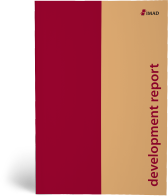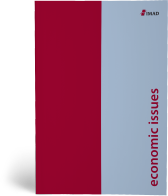Demographic changes and labour market
The growing proportion of the population aged over 65 has a significant upward effect on expenditure on pensions, health care, long-term care and other costs related to ageing. Population ageing requires, among other things, changes in the fields of social protection and employment, and appropriate policy responses in many other areas, such as adjusting the environment and services to the needs of older people. In addition to the increasing labour shortage, demographic trends also have a significant and growing impact on the labour market. The labour market plays a central role in determining economic and social progress. Its main macroeconomic indicators are employment, unemployment and wages, which are crucial for the well-being of the population.
Active Ageing Strategy: Society is becoming long-lived
Life expectancy has been increasing and the share of over 65-year-olds has been growing rapidly. In the years ahead, these trends will be even more pronounced. To comprehensively address these challenges, the Government of the Republic of Slovenia has adopted the Active Ageing Strategy, which represents the substantive framework for the implementation of the necessary change. The document includes…
Development Report 2017
Following the setback during the crisis, Slovenia has been making progress in terms of economic development and the welfare of its population in recent years; it has also reduced pressures on the environment. Since 2014 the economic picture has been improving, and Slovenia is again catching up with economically more advanced countries. The recovery has led to an overall improvement in the material…
Demographic change and its economic and social consequences
The age structure of Slovenia’s population is changing, as is the case in the majority of developed countries. The key feature of the changes is a contraction in the share of the working age population and an increase in the number of elderly people.
Economic Issues 2016
Economic Issues has been dealing with topics that require an economic policy response since its first edition in 2007. This year’s publication focuses on fiscal policy and developments as well as responses to demographic change in Slovenia. We also prepared international conference about the topics.
Development Report 2017
Following the setback during the crisis, Slovenia has been making progress in terms of economic development and the welfare of its population in recent years; it has also reduced pressures on the environment. Since 2014 the economic picture has been improving, and Slovenia is again catching up with economically more advanced countries. The recovery has led to an overall improvement in the material…
Development Report 2016
In the past few years, Slovenia has taken a number of positive steps and slightly narrowed its development gap with the EU. Regardless of positive shifts, challenges remain in terms of ensuring a more sustainable improvement to Slovenia’s growth potential and the welfare of its population, which will require more radical structural changes.
Assessing the Effects of Some Structural Measures in Slovenia
According to IMAD analyses, structural imbalances in Slovenia have been accumulating for several years, impeding economic recovery and, in particular, the achievement of lasting and stable economic growth and long-term fiscal sustainability.
Development Report 2016
In the past few years, Slovenia has taken a number of positive steps and slightly narrowed its development gap with the EU. Regardless of these positive shifts, challenges remain in terms of ensuring a more sustainable improvement to Slovenia’s growth potential and the welfare of its population, which will require more radical structural changes.
Development Report 2015
The year 2014 was marked by positive shifts in terms of economic development, the deterioration in the material position of households was halted, while pressures on the environment eased during the crisis, mainly under the influence of weak economic activity. To ensure more permanent economic growth and sustainable convergence to more developed countries, and to maintain the quality of life and…



